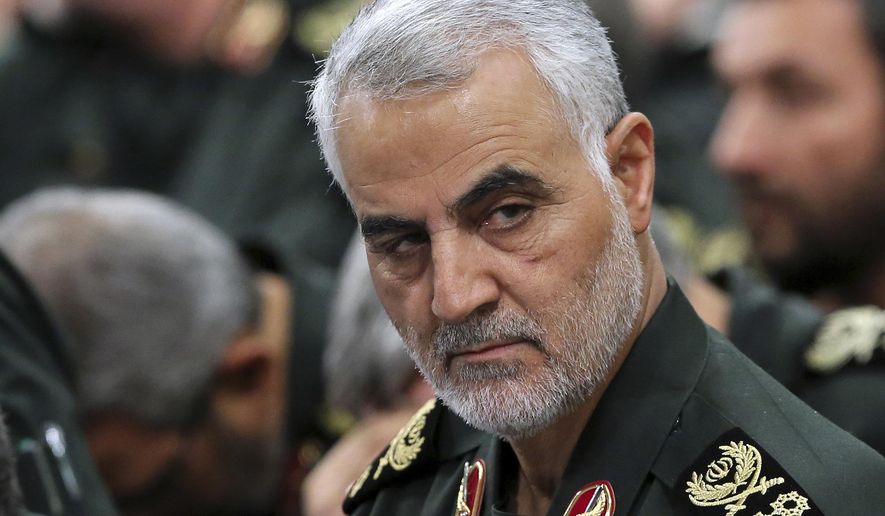OPINION:
President Donald Trump once waxed poetic about keeping “bad hombres” out of the United States. Qassem Soleimani was one such bad hombre.
Soleimani, the powerful and malevolent Iranian general who the U.S. took out on Thursday evening in Iraq, was an evil, blood-soaked figure. Gen. David Petraeus once called him “our most significant and evil adversary in the greater Middle East.” Soleimani directed Iran’s Revolutionary Guard’s Quds Force, a U.S.-designated terrorist organization. The Quds Force not only wreaked havoc on its own, but also trained and armed terrorist groups from Iraq to Lebanon to Syria to Yemen to the Palestinian territories.
Soleimani was directly responsible for the deaths of hundreds of U.S. troops in Iraq. And even as the U.S. presence in Iraq wound down, he was still grimly active, making war on the United States and our allies. Recent militia attacks on the U.S. Embassy in Baghdad were directed by forces under Soleimani’s direction. It’s telling, indeed, that Soleimani was actually in Iraq as those attacks occurred. (He was killed, apparently by drone strike, at Baghdad’s airport.) Soleimani was also hard at work undermining Israel and Saudi Arabia.
According to the Pentagon, at the time of his demise, Soleimani was actively planning yet more bloodshed. “This strike was aimed at deterring future Iranian attack plans,” the Defense Department said in a statement. The targeted strike on Soleimani shows that the United States maintains robust intelligence in the Middle East — this in stark contrast, for instance, to North Korea.
Tony Badran, an Iran expert at the Foundation for Defense of Democracies, explained that, “Strategically, the killing of Osama Bin Laden and, more recently, of ISIS leader Abu Bakr al-Baghdadi, pale by comparison. In addition to being responsible for killing hundreds of US soldiers during the Iraq War, Soleimani directed a larger state project, which has shaped the geo-politics of the region.” Soleimani was a key figure in Tehran’s power projection across the region — he was central in implementing Iran’s plans for dominance across the Middle East.
Both Presidents Bush and Obama reportedly had opportunities to kill Soleimani, and both declined. Soleimani, they likely reasoned, was simply too powerful; second in command in Iran, behind only the ayatollah. He was considerably more influential than Iran’s quasi-democratically elected president. And indeed, there can be no doubt that taking him out will be viewed in Tehran as a significant provocation, and an escalation in the United States’ long-running conflict with post-1979 Iran. The key, now, will be to continue to contain and deter Iran’s bloody actions. The killing of Soleimani will, hopefully, show that the United States is no longer to be trifled with, and that Iran’s actions will be met with a significant cost going forward.
President Trump was elected, in part, on pledging to withdraw the United States’ heavy footprint in the Middle East. But he’s also put Iran on notice, telegraphing in very clear ways he is not going to allow the region to become a fiefdom of Tehran. This is a good thing. Indeed, deterring Iranian imperialism is not inconsistent with the United States’ move for a lighter footprint. Qassem Soleimani was a bad hombre, and he had it coming. To coin a phrase: Sic semper bad hombres.




Please read our comment policy before commenting.